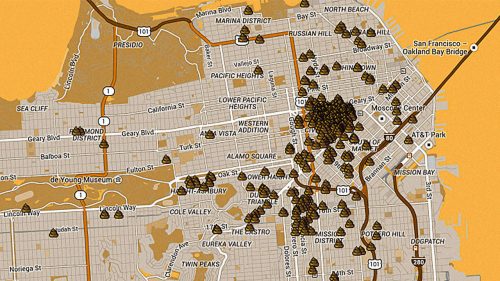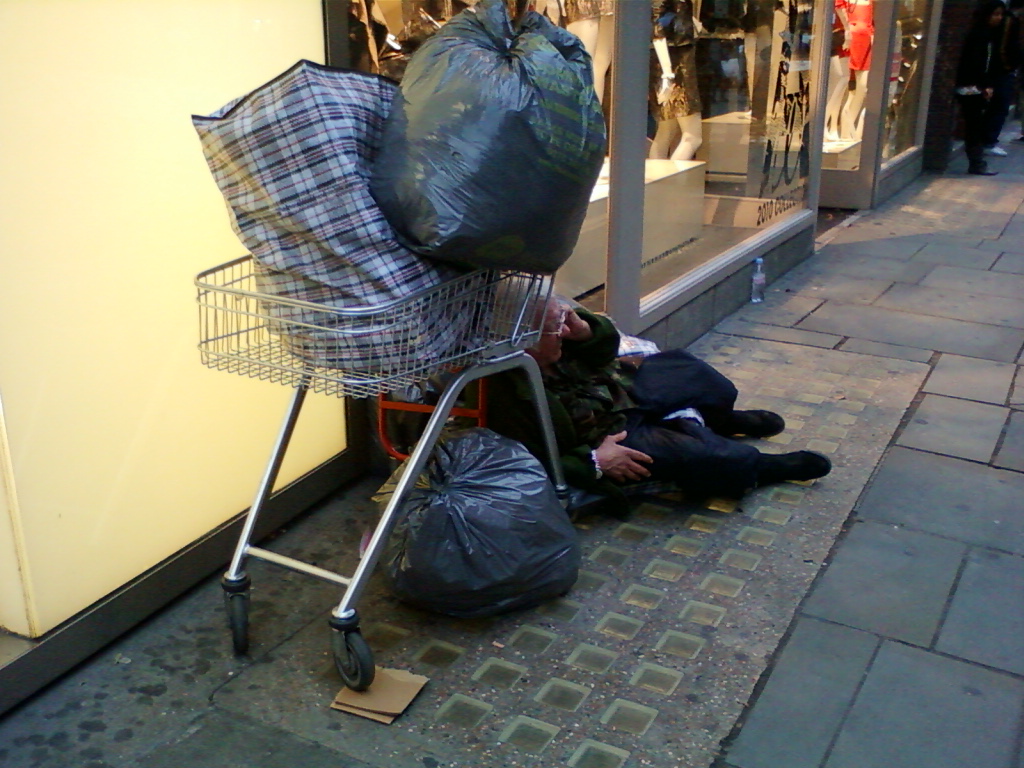In the US, the word “Bidenville” is gaining traction as a term for a waste-filled tent city inhabited by what the left calls “people experiencing homelessness.”
In French, a “bidonville” is a shantytown. A “bidon” is a large container, like the giant yellow vegetable oil bottles used to carry drinking water in developing countries.
I’ve seen plenty of shantytowns in cities from India to Togo; they are an unfortunate consequence of rapid urbanization.
What surprised me when I came home to Washington, D.C., a few months ago was seeing shantytowns both outside the State Department, where my old office was, and Union Station, near my new office.
In America under President Joe Biden, the word “Bidenville” is beginning to gain traction as a term for a waste-filled, insalubrious tent city inhabited by what the left calls “people experiencing homelessness,” who often suffer from an unfortunate combination of drug addiction and mental illness.
Shantytowns aren’t new to America. During the Great Depression, they were ironically called Hoovervilles after President Herbert Hoover.
However, at that time, Hoovervilles comprised able-bodied people who were out of work due to the worst economic crisis and highest unemployment in U.S. history. Now, unemployment is low and entry-level jobs go begging. The Bidenvilles of today are filled more by ideology and incompetence than economic duress.
The District of Columbia now has 97 “encampment sites” scattered across the city. Maybe that’s one reason why Rep. Andrew Clyde, R-Ga., is calling the District a “disgrace for our country” and opposes the “home rule” enjoyed by the nation’s capital since 1973.
Neglect in Name of Tolerance
While politicians bicker about whether to call inhabitants of the camps “people experiencing homelessness,” “unhoused persons,” or “persons without shelter,” they fail to make the hard choices required to help.
To her credit, D.C. Mayor Muriel Bowser, a Democrat, has attempted to clear at least some sites despite the opposition of activists whose sole aim seems to be to entrench their clients in misery in the name of freedom.
For the most part, however, mayors in cities such as San Francisco and the District pour money into supporting the outdoor lifestyle of thousands of seriously unwell people, including by facilitating their consumption of drugs.
This not only creates a hostile environment for the locals whose taxes fund the chaos, it fails to treat the root cause of affliction so that the homeless can escape the cycle that brings them to the streets in the first place.
Michael Shellenberger argues in his book “San Fransicko: Why Progressives Ruin Cities” that what homeless addicts need is a choice between mandatory drug treatment or prosecution for misdemeanors such as public defecation and littering. But what they get is continued neglect in the name of tolerance.
The reason why tent slums subsist even in the richest parts of the richest cities in America, Shellenberger writes, is not a lack of money but misplaced compassion and policy failure.

Border Crisis Hits Home
Now, the impact of the crisis at our southern border is colliding with the homelessness problem and spreading into the progressives’ backyards, and they aren’t happy.
Alejandro Mayorkas’ Department of Homeland Security let 79,652 illegal immigrants into the United States last June alone after its agency, U.S. Customs and Border Protection, briefly arrested and “processed” them. So far since Biden’s inauguration in January 2021, Customs and Border Protection has caught and released over 1.3 million illegal immigrants.
Illegal immigrants gradually have been arriving in the Washington area since the Biden administration neutered border enforcement. But with illegal crossings topping 200,000 a month, and half or more of these migrants being released and moved into the interior, the numbers of newly arrived and needy illegal aliens are rising all over the country. Some end up on the streets, compounding already dire problems of homelessness.
Bowser may agree with the Biden administration’s open borders agenda, but she seems to have a hard time when the reality hits home in the District. Bowser has complained that too many migrants are being bused from the southern border and filling up D.C. homeless shelters
“We think they’re largely asylum-seekers who are going to final destinations that are not Washington, D.C.,” the mayor said, evidently hoping they’ll become someone else’s problem.
“Local taxpayers are not picking up the tab and should not pick up the tab,” Bowser said. “We really need a coordinated federal response.”
The ‘Swamp’ Solution
Americans couldn’t agree more. Unfortunately, where border and immigration enforcement are concerned, the federal government is absent while on duty.
Using the Migrant Protection Protocols, Title 42, and other existing authorities, U.S. Customs and Border Protection could stop the chaotic flow in short order. Instead, its parent agency, the Department of Homeland Security, is abusing parole authority and recklessly relying on the promises of illegal immigrants to show up for immigration hearings. This compounds negligence with wishful thinking.
According to a recent report in the Washington Free Beacon, DHS has lost track of thousands of illegal migrants. And of those officials released and tracked, at least one-third failed to comply with the terms of their release.
DHS data shows that only around 1 in 10 asylum-seekers who pass “credible fear” interviews at the border ever go on to be granted asylum—mostly because they fail to apply at all or don’t bother to go through with the whole process.
The “swamp” solution, of course, is to federalize and give more taxpayer money to the problem of homeless migrants.
D.C. Delegate Eleanor Holmes Norton, a Democrat, introduced an emergency appropriations bill July 19 that would provide additional funding for the Federal Emergency Management Agency’s Emergency Food and Shelter Program. Funding would be designated for humanitarian assistance to migrants, whether arriving by FEMA-funded air, bus, and rail travel or being bused in by the states of Texas and Arizona.
If Norton’s measure passes, taxpayers not only would be on the hook for illegal immigrants’ shelter, food, and medical care after crossing the border, followed by transportation to their favored U.S. destination. Taxpayers also would be shelling out for housing and feeding the migrants once they arrived. This would be the ultimate (socialist) red carpet.
Norton, whose vote as a delegate in the House doesn’t count, claims that “the governors of Texas and Arizona are exploiting and harming vulnerable people fleeing desperate and dangerous situations in their home countries for political gain.”
Start Enforcing the Law
But the truth is that these two border states have been crying ”help” for months, with no response from Washington. Now that the problem is in their backyard, Democrats are willing to act, if only to throw more money at it or kick it elsewhere.
However, despite spending an estimated $106,000 per homeless person, San Francisco still has around 8,000 on the streets.
Under Bowser, the District of Columbia has raised tens of millions more in taxesin an effort to end homelessness in fiscal year 2022. However, from what we D.C. workers and residents all can see outside, that hasn’t happened here yet either.
Domestic homelessness is a thorny issue with no simple solution.
Meanwhile, the way to avoid more taxpayer-funded sheltering of homeless foreigners who are here illegally is simple: Start enforcing the law, using the Migrant Protection Protocols, Title 42, and other existing measures to shelter them securely out of the country until their cases may be considered properly.
Absent that commitment, more Bidenvilles are coming to a city near you.
By Simon Hankinson, a former foreign service officer with the State Department, is a senior research fellow in The Heritage Foundation’s Border Security and Immigration Center. Original here. Reproduced with permission.
